The potential exists to increase the current global food supply by up to 13 percent of kcal and 15 percent of protein levels
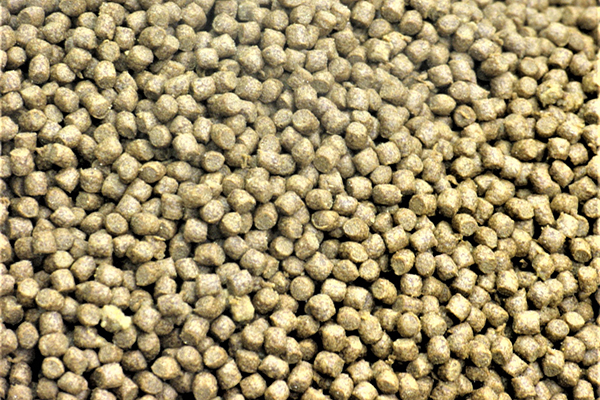
The current structure of the global food system results in suboptimal food availability, as a large proportion of the resources used in livestock and aquaculture feeds could be consumed by humans. Up to 40 percent of all arable land and more than 30 percent of cereal crop production is used for animal feeds and approximately 23 percent of all captured fish are destined for non-food uses, mainly for fish and livestock feeds. This food–feed competition reduces the efficiency of the existing food system, as environmental and resource costs are higher when arable land is used for animal feed production instead of directly contributing to human consumption.
Increasing the feed use of food system byproducts – that is, the secondary products created alongside the primary, human-consumable products – has been proposed as a solution to increase resource use efficiency, to reduce food–feed competition and to increase food system circularity. In addition, using food system byproducts as feeds can reduce the environmental pressure on arable land and freshwater ecosystems, as well as reduce greenhouse gas emissions and fertilizer application. Increasing the use of byproducts and crop residues as feed can also be cost-effective since many of them are widely available, low-cost materials.
However, some non-food-competing feedstuffs are less suitable for feed use; for example, crop residues are fibrous and of low digestibility and poor protein quality, and others, such as some crop processing byproducts, are protein dense but low on energy. Yet, some non-food-competing feedstuffs can be improved through processing or additives. Despite the challenges, part of the food-competing feed use could be replaced with non-food-competing feedstuffs without negatively impacting productivity.
This article – adapted and summarized from the original publication [Sandström, V. et al. 2022. Food system byproducts upcycled in livestock and aquaculture feeds can increase global food supply. Nature Food Volume 3: 729–740 (2022)] – reports on a study to assess the potential of improving circularity in the global food system by increasing the use of food system byproducts and residues in animal feeds.
Study setup
The material flows of feed use and the production of byproducts and residues in the global food system were mapped to understand the links and dependencies between the three subsectors of crop, livestock and aquaculture production. The analysis consisted of four main steps (Fig. 1).
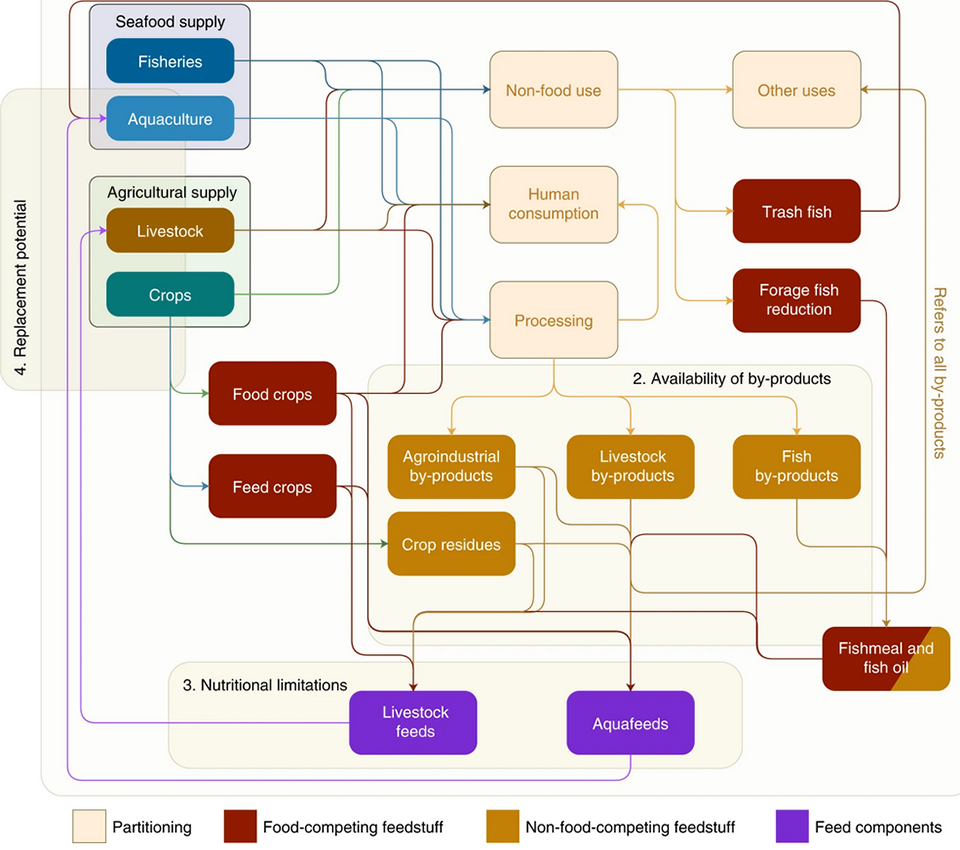
First, we quantified the global food system flows, including the national levels of feed use in both the livestock and aquaculture sectors and the potential production of byproducts. Second, the regional availability of byproducts and residues was analyzed by subtracting the quantities used as feed from the potential production. Third, using existing literature on feed experiments, we considered how much of the food-competing feedstuff can be replaced with food system byproducts, considering the nutritional requirements of the production animals as well as regulations. Fourth, the replacement potential was analyzed, combining the regional availability of the byproducts and residues with the nutritional requirements. Finally, the potential increase in the global food supply was calculated, assuming that all feedstuffs freed by this replacement were redirected to human consumption. The analysis was performed over a three-year period from 2016–2018.
For detailed information on the methodology used in the study, refer to the original publication.
Results and discussion
The approach used in our study provides a much-needed systemic view of the highly interlinked global food system and advances the research field on three main fronts. First, global datasets including both feed material flows and the availability of food system byproducts and residues at this level of detail do not exist. While different models and reports provide data on livestock or aquaculture feed use, these data are not harmonized throughout the global food system.
Furthermore, while some studies have estimated feed use in both agriculture and aquaculture systems, they do not account for country-level differences in feed use or have only a regional focus. Here we combined and harmonized data from various sources including crop, livestock and aquaculture production, as well as wild fisheries, and quantified the dynamics of global feed flows in remarkable detail (Fig 2).
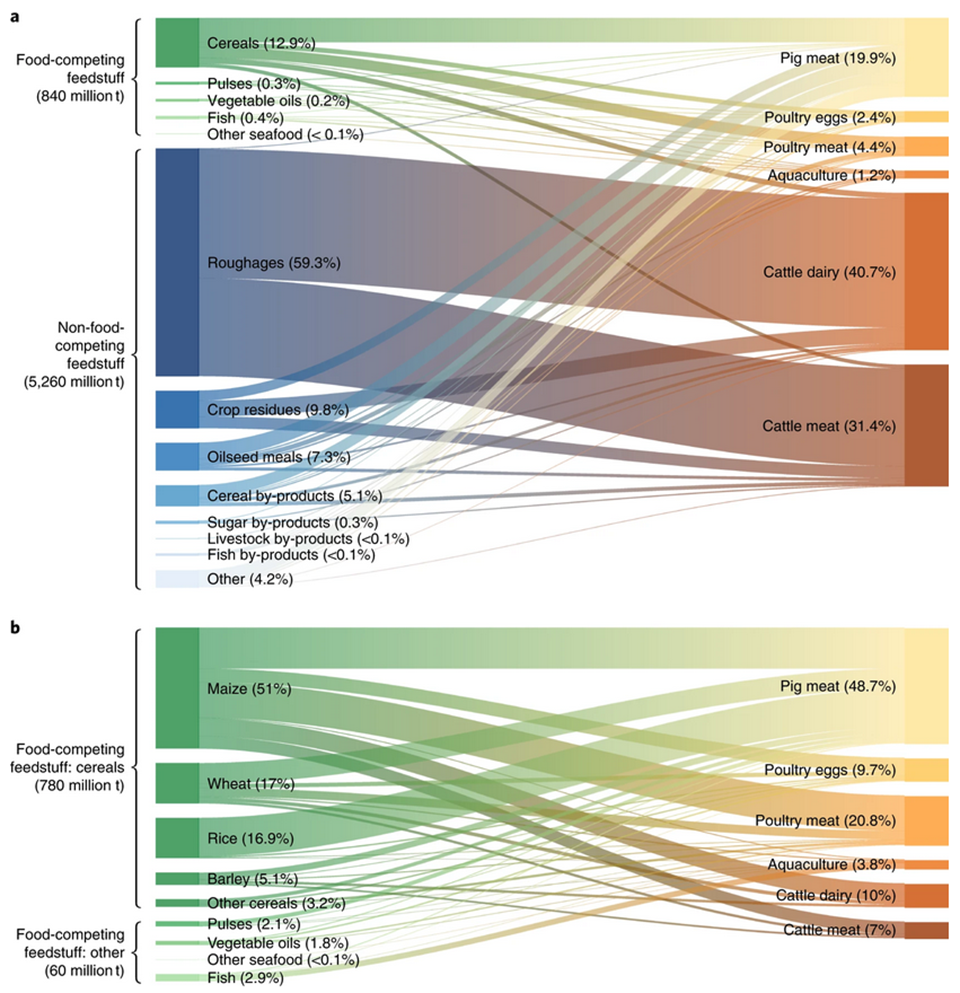
Results of our study demonstrated the considerable potential of increasing the feed use of food system byproducts in the current food system. Our analysis extends and complements existing scenario-based assessments, which have found that it is possible to keep the global food supply adequate by restricting livestock feed use to only non-food-competing feedstuffs, combined with changes in livestock production levels and thus diet changes. By quantifying the potential to reduce the feed use of food-competing feedstuffs across the current global food system, we were able to estimate how to increase the global food supply without consuming additional natural resources.
We found that reducing the feed use of cereals presents the highest potential for increasing the global food supply. However, the increased supply of whole fish, pulses and oilseed oils can also contribute substantially to human nutrition, especially in terms of protein and fat (Fig. 3). Notably, we also showed that these potentials vary across the globe (Fig. 4). Global trade can increase the availability of food system byproducts – and therefore the replacement potential – in some regions, but in this analysis, only intra-region trade was allowed.
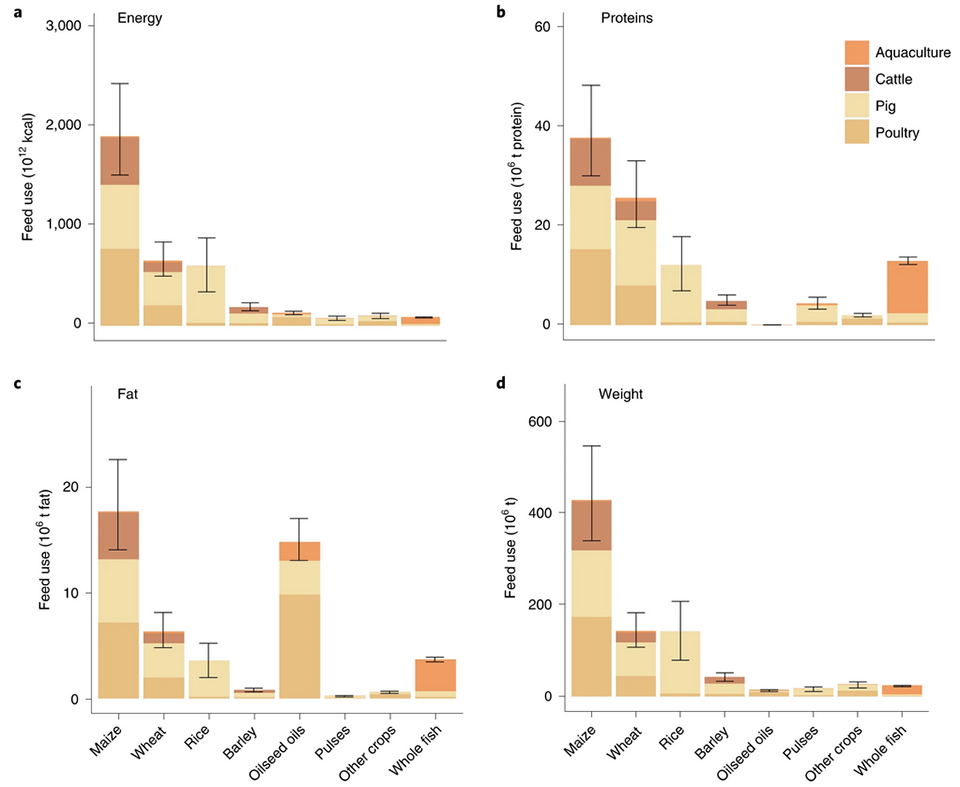
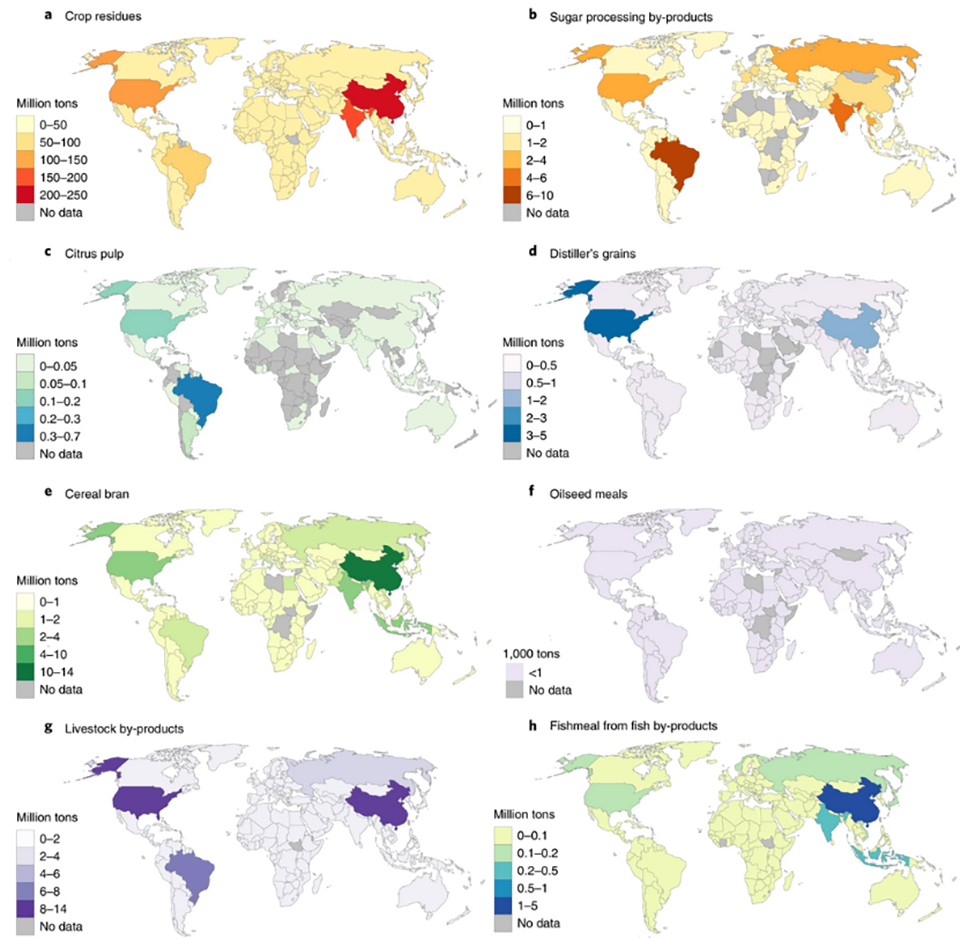
The replacement potential of food-grade feed use could be further increased by also considering food waste and former foods – that is, foodstuff manufactured for human consumption but not consumed by humans for practical or logistical reasons. Post-consumer food waste can be safe and nutritious for swine when treated properly, and pre-consumer, plant-based food waste can also be fed to ruminants. Replacing food-competing feedstuff with food waste could save up to 8.8 million tons of human-edible grains in the European Union, in addition to our estimates of 14.7–18.6 million tons on the replacement potential of cereals with byproducts and crop residues in Europe.
Moreover, food system byproducts not yet considered in this study (such as byproducts from dairy or bakery industries) have shown considerable feedstuff potential in case studies with little or no reductions in productivity. Their replacement potential should therefore be incorporated and assessed in future global studies. Further research is warranted on the replacement potential of food-competing feedstuffs with different byproducts and residues in animal nutrition.
Despite the high potential, the prospects of replacing part of food-competing feedstuffs with food system byproducts and residues are faced by various challenges. For example, the production of alternative feeds can be limited by the availability of byproducts and residues or by existing regulations, such as bans on intra-species feed recycling in farmed animal production in the European Union.
Nutritional aspects can also limit the potential. Some byproducts are of lower nutritional quality and can contain antinutritive compounds or high amounts of fiber that can lead to decreased animal production, especially in monogastric animals. This is particularly the case with crop residues, which show the highest potential availability (Fig. 5).
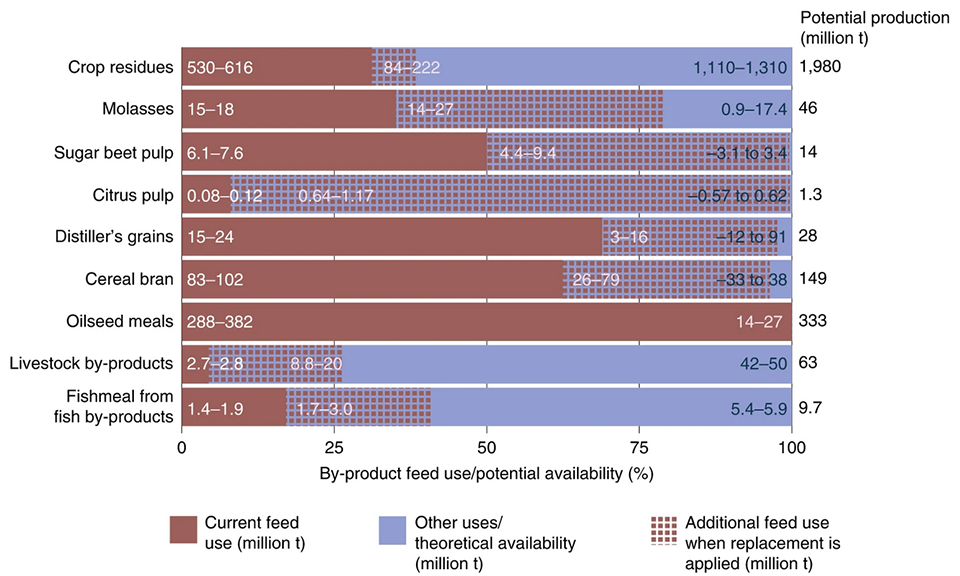
Replacing high-quality feeds with alternative biomass materials could result in lower livestock and aquaculture productivity or reduced nutritional content (for example, fatty acid composition) of the commodities produced. Raising livestock or fish species that can consume lower-quality feeds (such as crop residues) can increase the feed use potential of these byproducts and residues. If the use of lower-quality feeds is considered beneficial from a larger circular systems perspective – for example, supported by policy incentives – reductions in productivity could be acceptable to producers.
Furthermore, processing byproducts through, for example, fermentation or other chemical treatments or additives can improve their nutritional value. Yet, as shown in the different feed experiment studies we reviewed, crop processing and animal byproducts are of particularly valuable nutritional quality, and they can replace food-grade feed use while maintaining productivity.
It is possible to formulate diets entirely based on non-food-competing feedstuffs even at very high animal-production levels. Furthermore, many byproducts (especially those generated in livestock and fish processing) have high water content and are highly perishable, or their production is seasonal (as is also the case with crop residues). Hence, they require proper infrastructure and know-how for stabilization, collecting, transportation, storage and processing, which are currently not in place.
When increasing the feed use of food system byproducts and residues, it is important to consider the impact of reduced raw materials available for other competitive uses, such as bioenergy, pharmaceuticals and fertilizer production. Yet, even when applying the maximum replacement potential shown in this study, much of crop residues and fish and livestock byproducts would remain available for other uses (Fig. 3). The issue of competitive uses is, therefore, more critical for other byproduct groups, such as crop processing byproducts. It can be argued, however, that food production should be prioritized over other uses of these biomass flows, as the other uses can typically utilize multiple alternative materials, whereas food can be produced only within food systems.
Furthermore, if aiming to totally decouple animal production from arable land use and consequently limit the production of byproducts only to food production, the availability of feed-use-driven byproducts such as soybean meals would be considerably lower. The complexity in utilizing food system byproducts highlights that a broad systems perspective is required, complemented by further research to fully understand the replacement potential, practical challenges and trade-offs related to realizing this potential.
Increasing the human consumption of food-grade feedstuff also presents challenges. First, not all feed cereals meet the food quality standards set by manufacturers or government agencies. Changing from feed crop production to food crop production might require additional inputs, such as increased fertilization. Second, consumer preferences such as cultural and taste aspects need to be considered. For example, whole fish used in fishmeal and fish oil industries (that is, forage fish) consists mainly of bony and small pelagic fish species, other low-value bycatch fish or juvenile individuals. These are often not preferred for direct human consumption, and they might require processing and preserving (for example, in canned, cured or dried form) for wider acceptance and uses in human diets. However, these small fish are often low-cost and highly nutritious, and they can serve as valuable dietary additions, especially in regions where more expensive fish products are not accessible for many people.
Our study provides preliminary quantifications, but a wider range of byproducts and their replacement potential should be assessed in future studies, also including a more comprehensive trade model. Specifically, some food-competing feedstuff categories excluded in this study, such as roots and tubers, might present additional replacement opportunities.
Moreover, estimating the replacement potential constraints in animal nutrition is challenging since animal nutritional needs differ in different growth stages and production levels. The estimates used in this study were based on feed experiment studies that consider each replacement material individually. In practice, animal diets would probably be designed to include several different replacement materials simultaneously (for example, brans, sugar beet pulp and oilseed meals). Their combined effect would, however, need more careful consideration, as it could affect the nutritional value and palatability of the final product or animal health. On the basis of these limitations, our results should be considered as the theoretical potential of a biophysical change. These findings should be combined with more local-level studies on the practical replacement potential, which also accounts for social and economic factors.
Perspectives
More efficient use of food system byproducts and residues can reduce food–feed competition and increase the global food supply without increasing the use of valuable natural resources. This, in combination with other measures, is an urgently needed action in the transition towards more sustainable and circular food systems, which are prominent objectives in many national and European Union-level strategies.
However, harnessing the untapped potential of food system byproducts and residues would require a paradigm shift that puts more value on the efficient use of materials and the capacity of the livestock and aquaculture sectors to circulate non-food-grade biomass back to food systems through feed use. Policy interventions and regulation would be needed in managing the feed resources and to provide incentives for feed industries to develop and innovate solutions for increased use of the materials least used as feed, as highlighted by our study.
Now that you've reached the end of the article ...
… please consider supporting GSA’s mission to advance responsible seafood practices through education, advocacy and third-party assurances. The Advocate aims to document the evolution of responsible seafood practices and share the expansive knowledge of our vast network of contributors.
By becoming a Global Seafood Alliance member, you’re ensuring that all of the pre-competitive work we do through member benefits, resources and events can continue. Individual membership costs just $50 a year.
Not a GSA member? Join us.
Author
-
Vilma Sandström, Ph.D.
Corresponding author
Water & Development Research Group, Espoo, Finland
[105,102,46,111,116,108,108,97,64,109,111,114,116,115,100,110,97,115,46,97,109,108,105,118]
Tagged With
Related Posts
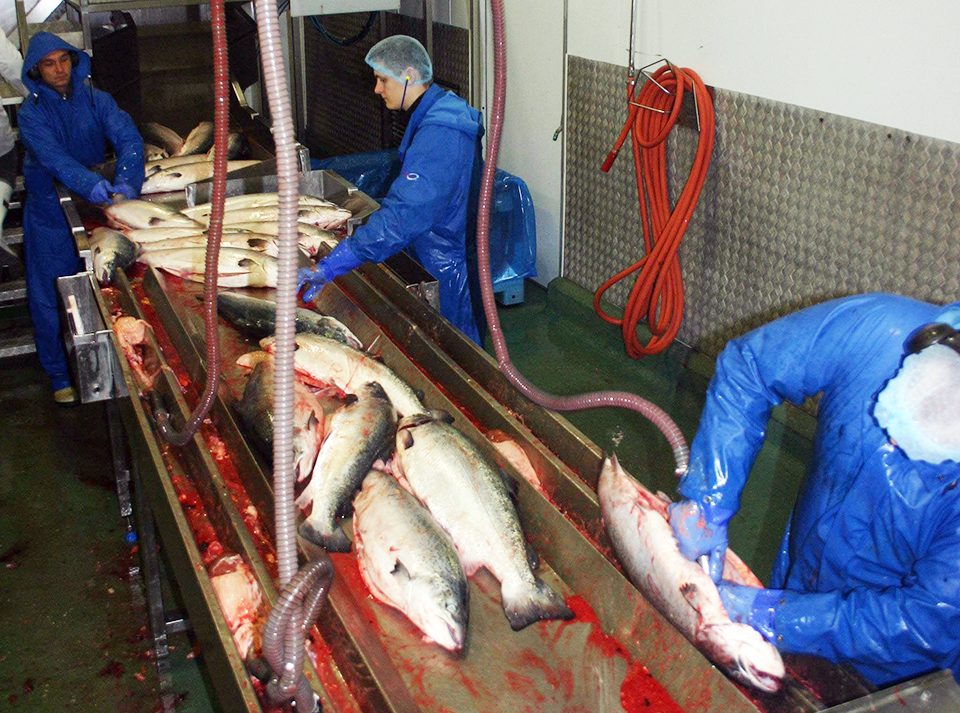
Responsibility
Aquaculture byproducts improve sustainability of seafood value chains
Tons of aquaculture byproducts are available as sources for fishmeal and fish oil to supplement the supplies obtained from fisheries. Innovative technologies are supporting more efficient use of these by-products in aquafeed.
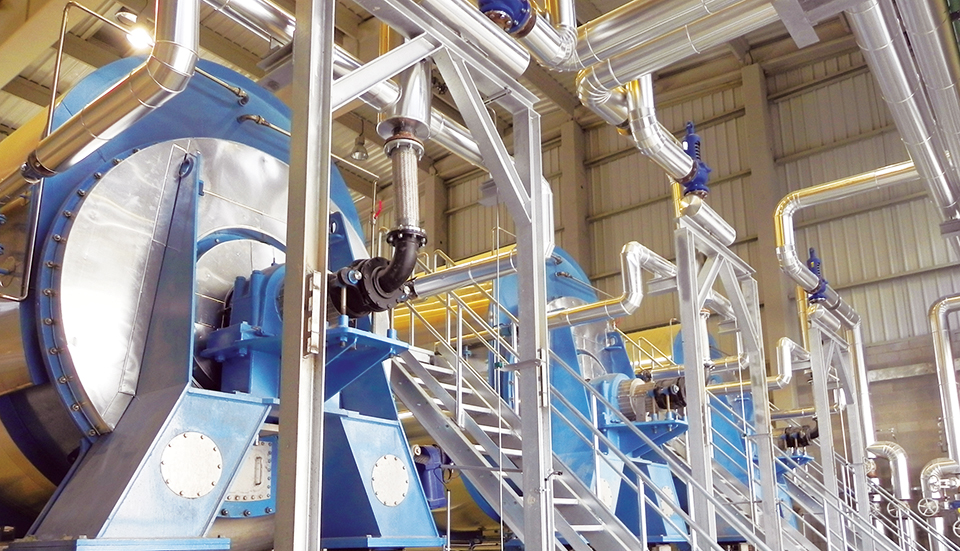
Aquafeeds
Animal byproduct concentrates useful tools in formulation
With the market volatility of fishmeal, as well as rising sustainability concerns, the aquaculture industry is seeking sources of protein, such as animal byproduct concentrates, to substitute for fishmeal.
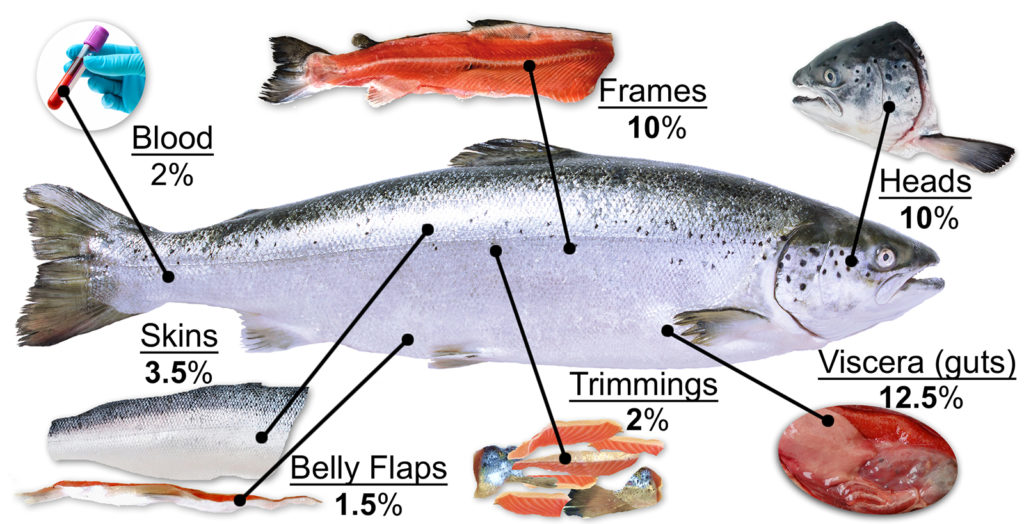
Aquafeeds
It takes guts to advance sustainability in aquaculture
With byproducts representing between 25 to 50 percent of the weight of various fish species, we need to be looking at how the entire fish is being used: even the heads, guts and skin.

Innovation & Investment
Aqua-Spark acquires stake in biotech company Hofseth Biocare
Aqua-Spark has acquired a stake in Norwegian biotech company Hofseth Biocare, which valorizes farmed salmon byproducts for consumer goods.



